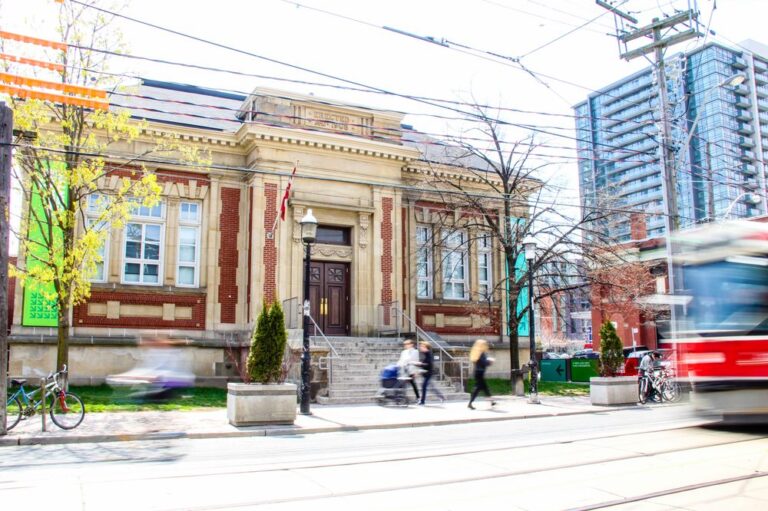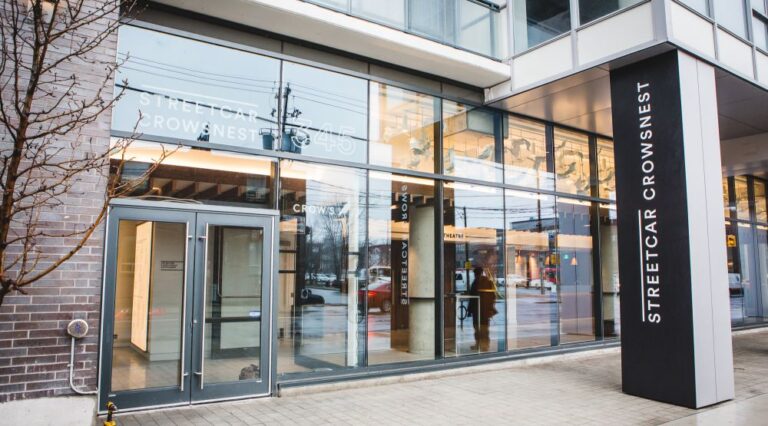In Conversation: Soheil Parsa
Soheil Parsa is at the forefront of an important exploration: diversity in practice. Veteran theatre director and co-founder of Modern Times Stage Company, his works, including his six-time Dora Award–winning production of Blood Weddings in 2015, have been hailed as examples of diversity done right.
Now, as Modern Times, in conjunction with Aluna Theatre, revives the production and prepares to launch “Postmarginal: Cultural Diversity as Theatrical Practice,” a symposium and workshop aiming to “transition cultural diversity in the theatre from exercises in identity politics into a form of contemporary theatrical practice,” we sat down with Parsa to discuss the ever-present, increasingly throwaway, but ultimately crucial term: diversity.
Being “multicultural”
I’ve ended up hating that word: multicultural. What does it mean? I remember in the early years a lot of people in the theatre community labelled me and my work as multicultural. First of all, I don’t want to be considered an “Iranian theatre director” or even an “Iranian-Canadian theatre director.” I’m simply a director; a theatre director with a relatively good knowledge of both Western and Eastern theatre. I’ve done a lot of research. I’ve investigated different forms and traditions of theatre—Western avant-garde, European, North American, Eastern, Japanese, Persian—in order to find my own vocabulary, my own voice as a practitioner, as an artist.
When I came to this country in 1984 with my limited English—I barely spoke English, and I was 29 years old, so it was a bit late—I didn’t have an agenda. I didn’t think: “I must find another Middle Eastern artist or another immigrant to connect with.” In fact, the first person in the theatre department at York I connected with was Peter Farbridge. And he’s of British heritage. We never talked about our differences much, our different backgrounds. From the very beginning we were interested in the work.
Diverse casting
It’s very unconscious to me now. Some people praise me for the way I work and how I diversify a cast, and I say, “Don’t give me that compliment, because for me it’s just a given.”
I’m always interested in what we share as human beings. I respect our differences, I think we are all different, but any place I go where I meet people, first I want to find that similarity, that common ground. And what is so important for me, and it might sound a bit cliché, but I see humanity as a beautiful garden with all these beautiful flowers. It would be very boring to just have one colour. It’s not just about black or white. Personally, if I go and see a homogenous cast, from any culture, it bores me. I’m not interested in it. The themes of human loneliness, the mystery of life, the mystery of existence, the conflict between will and fate—these are my concerns, these are my preoccupations. So it’s already beyond a cultural specificity for me. It’s to see my stage not reflecting the city of Toronto, but reflecting the world. It’s the human race that fascinates me.
A play’s potential for inclusion
In my opinion we cannot talk about cast diversity onstage without talking about diversity of style in theatre. It is so associated. For example, if I were to take a very realistic play, set in a very specific country, in a very specific culture, I don’t think I would be able to diversify.
Realism is a dominant form in North America; realism and naturalism are. And I believe they are fantastic styles and languages for film, but to me theatre is beyond naturalism and realism. If you have a piece that is set in a specific country—say India—and the design is realistic and represents India, the costumes are Indian and so forth, then… How would you be able to diversify the cast? In realism, which is associated with rationalism, the audience sitting there sees everything perfectly designed for a specific culture in a specific country. So even if the actors are excellent, the audience sitting there would be thinking that it doesn’t make sense, because every other component of this production is truly naturalistic and realistic.

Blood Wedding (2015). Photo by Brian Damude
Not being “political”
The diverse theatre companies cast, for example, an African play with all African actors, and that’s another kind of diversity. They get the chance to bring something from their own culture, make an all-black cast, and there’s nothing wrong with that, it’s extremely valuable. But for me the challenge is whether we can diversify the cast on stage. Instead of just all black or white or Asian, can we mix people in a good way, in a right way? That’s also a valuable story to tell. Talking about diversity on a Canadian stage, where we can simultaneously in a production see five different actors from five different cultural backgrounds, that’s what I’m looking for. It’s about exploration; let’s go and talk about possibilities, about what else we can do. Otherwise it’s just: “I’m an Iranian, I have to do an Iranian piece, and you’re from Ontario so you can only talk about your experience in Ontario,” and it’s going to get so boring and it’s not going to get us anywhere. It would be horrible.
Plays about identity are not my favourite thing, not my style, not my concern. I’m not saying they shouldn’t be done, what I’m saying is that I’m not interested. As an individual I have a different concern, I have different things in my head. Even being a refugee, an immigrant coming to Canada, I’ve never had the urge or desire to direct a play about the refugee experience. I’m not here to be a preserver of my culture. I think that’s the job of the Iranian society of U of T, it’s not my job as an artist.
Blood Weddings and cultural specificity
Blood Weddings is set in Spain. It is a Spanish play, fantastic; I love the piece, that’s why I’m directing it. So if I want to be faithful to the play, to the setting and location of the original play, then I have to bring in Flamenco. Flamenco is an integral part of this play. Then I have to ask, do I have Flamenco actors or dancers? I find it very fake to start by bringing in a choreographer for two weeks to teach Canadian actors Flamenco dance. And I think the falseness starts from there.
The way I look at [playwright Federico García] Lorca, I realize that after eighty years the play is beyond cultural specificity. I find the characters archetypal beings who represent the very essence of human struggle, hope, and failure. This is human. So what I did in this piece is accentuated the timelessness and placelessness of the event. It’s not taking place in any specific culture. With this I think—I hope—I managed to just get closer to the essence of the play. And by opening this up, making it timeless and placeless, the whole concept of diversity came so naturally and organically to it. The mother is of Colombian heritage, and the son is of Asian heritage. And most of my audiences told me that after, say, three minutes, they never questioned this.
This concept of timelessness and placelessness helps the audience. They are very imaginative. They don’t see a realistic set associated with any country or culture, and they have the freedom to let go. My personal opinion is that with too much naturalism and realism you cannot achieve that.
Opening windows of possibility
With the symposium and workshop, we really just want to come up with some great questions and possibilities, and encourage the theatre practitioners and producers to come and try and look at the whole thing from a different angle. This isn’t about tolerance and being a liberal society and accepting you and allowing you to bring a story from your own culture here. That is good; I’m not saying it isn’t. But eventually how are we going to look at the whole thing differently? We want to open a few tiny windows to the possibility of coming to experiment and investigate and find things. Because we have the potential. People, directors, they bring their own practice; their own techniques of their own theatre traditions. Let’s examine those. Let’s see how we can use them to create something different that at the same time allows us to diversify.















Comments